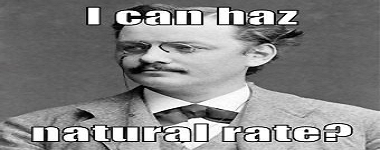Written by Philip Pilkington, Fixing the Economists
David Glasner from over at the blog Uneasy Money has co-written an interesting paper on Sraffa and his critique of the natural rate of interest as it was put forward in Hayek’s business cycle theory. There is a lot that might be written about this paper as I believe that the debate has much contemporary relevance.

Here, however, I will focus purely on the topic of the paper at hand. Namely, whether Sraffa’s critique of the natural rate of interest was coherent. I will also assume familiarity with the debate as, frankly, I’m too lazy to summarise it and interested people can read the paper which provides a fantastic overview.
Glasner and his co-author, Paul Zimmerman, quote Sraffa’s criticisms as such:
The “arbitrary” action of the banks is by no means a necessary condition for the divergence; if loans were made in wheat and farmers (or for that matter the weather) “arbitrarily changed” the quantity of wheat produced, the actual rate of interest on loans in terms of wheat would diverge from the rate on other commodities and there would be no single equilibrium rate. (p10)
Glasner and Zimmerman say that this disturbance would not persist. They write:
Deviations from equilibrium owing to fluctuations in the supply of real commodities would not persist; market forces would operate immediately to restore an equilibrium with all own rates again equalized, a tendency not mentioned by Sraffa. (p10-11)
They again quote Sraffa. In this quote Sraffa is saying that a market in which there is an increase in demand will go into backwardation. That is, a circumstance in which the forward price for a commodity is lower than the spot price.
Suppose there is a change in the distribution of demand between various commodities; immediately some will rise in price, and others will fall; the market will expect that, after a certain time, the supply of the former will increase, and the supply of the latter fall, and accordingly the forward price, for the date on which equilibrium is expected to be restored, will be below the spot price in the case of the former and above it in the case of the latter; in other words, the rate of interest on the former will be higher than on the latter. (p11)













Leave A Comment